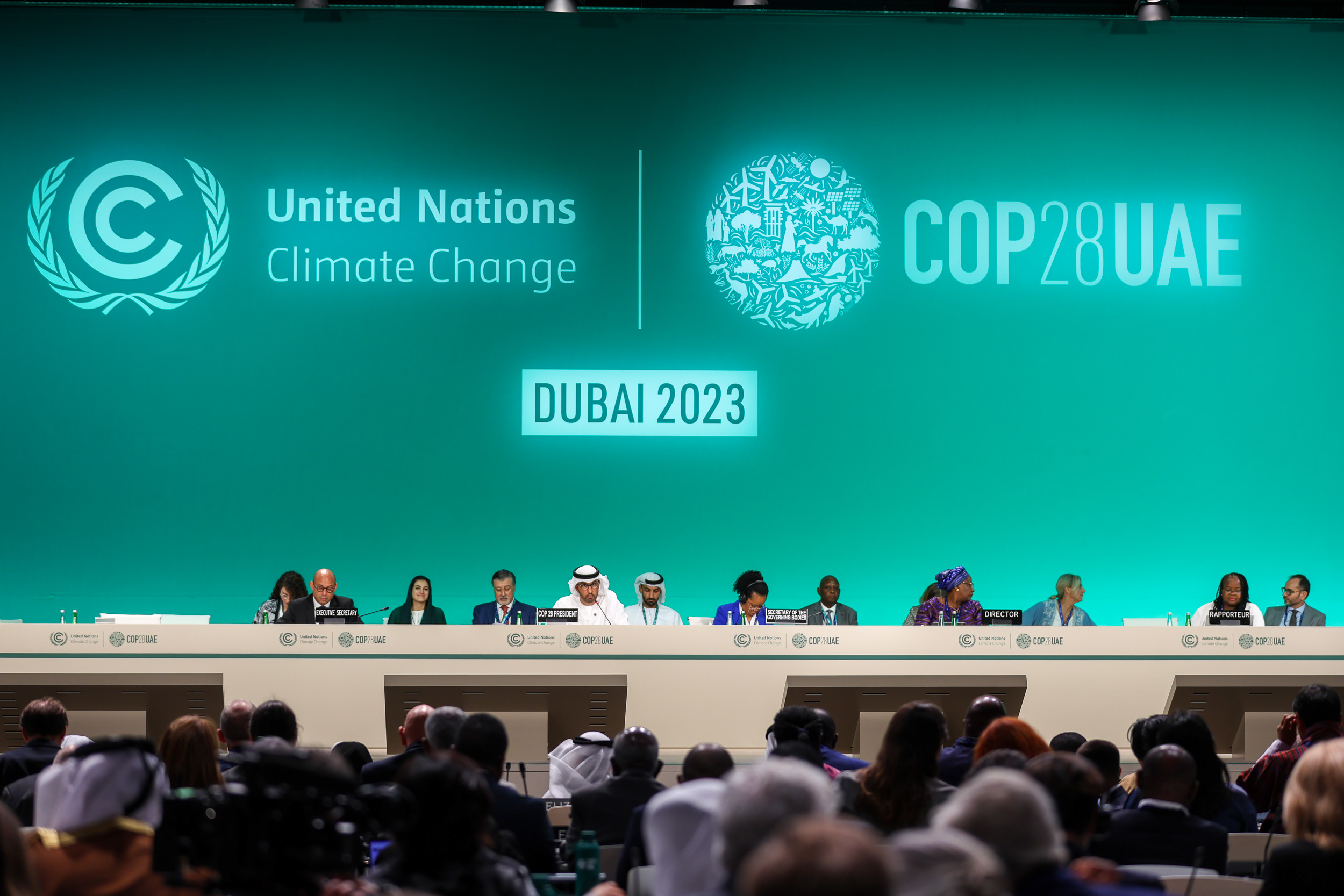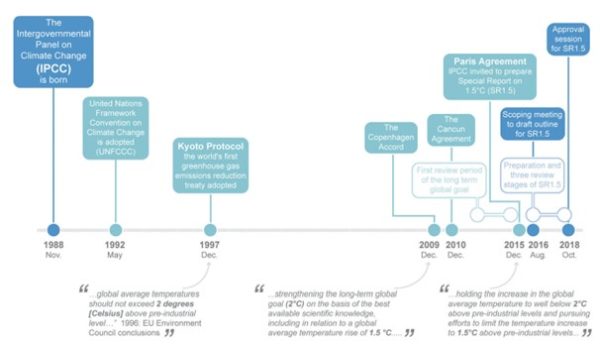
Photo by IISD/ENB | Mike Muzurakis | View of the dais during the plenary
Written by PhD students Rhiannon Biddiscombe and Niamh O’Callaghan from SCENARIO DTP
The past weekend’s headlines from COP haven’t been focussed on the emerging science and policy decisions. Instead, the spotlight was on controversial statements made by the COP president over the weekend. Sultan Ahmed Al Jaber claimed that science does not support the phase-out of fossil fuels as a route to the 1.5°C target. We’re here to show you why that’s not true.
Climate scientists measure global warming through global averaged air temperatures over a 30-year period compared to a pre-industrial reference level. The world reached 1°C of warming in 2017 and is predicted to warm by at least 0.2°C every decade on the current path set by human emissions. This heating is not even across the globe, and some areas have seen faster rises than others creating worse localised hazards associated with climate change in vulnerable regions.
The 2010s saw global greenhouse gas emissions rise to their highest level ever. Observed warming is human caused, with greenhouse gases emitted from fossil fuels dominating the trend. Carbon dioxide, methane and nitrous oxide are the largest contributors with the resultant trend masked slightly by aerosol cooling. Putting this warming in context shows that the 50-year warming rate since the 1970s is larger than any other period over at least the last 2000 years.
Since 2010, emissions have continued to grow by 1.3% a year, with gross domestic product (GDP) remaining the strongest indicator of CO2 emissions from fossil fuel combustion. Cumulative net CO2 emissions over the 2010s decade are the same magnitude as the remaining carbon budget we have left to limit global warming to below 1.5°C, providing a stark reality check of our situation.
Reducing our greenhouse gas emissions requires a quick and efficient reduction in fossil fuel consumption which in itself requires major energy system transitions. Al Jaber is correct in saying scrapping fossil fuels alone won’t help us achieve 1.5°C, but net zero will require a substantial reduction in fossil fuel use, CO2 free energy systems, widespread electrification, and greater energy efficiency. Carbon capture and storage will form only a small part of this plan and is not something we can rely on for mass storage across the globe. Wind and solar offer relatively cheap sources of energy, and this combined with increases in energy efficiency would create a greener system that would prove cheaper in the long term.
1.5°C has not always been the aim. The IPCC started out assessing a variety of scenarios of global warming, focussing equally on temperature rises above and below 2°C. However, in recent years there has been a shift to lower temperatures, particularly on 1.5°C.

Figure 1: The road to 1.5°C taken from: https://www.ipcc.ch/site/assets/uploads/sites/2/2022/06/SR15_Chapter_1_HR.pdf
This shift to more ambitious targets can be attributed to both the Paris Climate Agreement of 2015, more simplistic risk assessments, and a desire to not be ‘alarmist’. Some centres such as the Centre for the Study of Existential Risk (CESR) suggest that climate extremes remain dangerously unexplored.
The Paris Agreement of 2015 is considered the unifying agreement between countries to limit temperature rise to 1.5°C at best, and much below the upper limit of 2°C. Temperature rises above these limits are associated with increasing numbers and severity of extreme events such as heatwaves and droughts, and ecological breakdown.
Of the climate-related hazards associated with increasing global temperatures, many can be described as “locked-in” at certain points. This means that once we reach a given level of global heating, these effects become unavoidable even if we are able to achieve our low temperature goals.
One such “locked-in” effect is sea level rise associated with the melting of the Greenland ice sheet. Alone, the loss of ice from Greenland would result in sea levels rising by 20 to 34 centimetres, causing significant damage to coastal communities, regardless of emissions targets. However, there is evidence that heating above a threshold level of 2°C can result in runaway ice loss associated with a sea level increase of several metres, with a complete loss of the ice sheet leading to around 7 metres of sea level rise. This would be devastating, not just for coastal communities but for entire nations, and demonstrates the consequences of prolonged global heating.
The International Panel on Climate Change and World Health Organisation acknowledge that equity and sustainable development are vital to create a viable transition. Generally when we consider equity in global development we only consider international relationships, whilst intergenerational and national dimensions have an equally important role.
It is well known that those who have benefitted the most from industrialisation bear the greatest responsibility, whilst the worst problems tend to fall on those least responsible. To amplify this issue these worst affected groups tend to be underrepresented in the political, scientific and legislative international spheres. Recent years have seen growing literature on the idea of climate equity, and COP is no different. In COP28 we have seen much talk on the idea of international responsibility through the Loss and Damage fund, with examples of backlash seen from the US envoy (see day 1 blog).
Although it is important to respect different perspectives during diplomatic conversations, scientific disinformation and the cherry picking of facts remain rife within political discourse around the climate crisis. It is therefore important for scientific professionals to express their work in a clear and approachable way to reduce the risk of data and findings being misrepresented or misconstrued. For the president of COP28 to have made this major claim that goes against the work of so many scientists highlights the need for a clearer focus on the science in an understandable way.

